Kafjord
In March 1943, the German Arctic ocean fleet and its pride, battleship Tirpitz, moved to Kafjord about ten kilometres west of Alta in northern Norway. The mountains around Kafjord gave a natural protection and the fjord’s inlet was narrow and difficult for enemy submarines to pass. The Germans also set up air defences on the mountains around Kafjord. In addition to Tirpitz, battleship Scharnhorst, was also anchored at the inlet to Kafjord, while Tirpitz was anchored further in the fjord. From Kafjord it was close to the Arctic Ocean and the routes allied convoys sailed on their way to the Soviet Union. From the ally’s side, Tirpitz was seen as a major threat, tying large British marine resources. For this reason, Tirpitz became a British priority target.
The Germans knew about this and were reluctant to let her leave the fjord and venture out into open sea. Only once during her stay in Kafjord did she leave the fjord. On September 8, 1943, Tirpitz and several other German ships attacked a British weather station on Spetsbergen. After the mission, Tirpitz quickly returned to the safety in Kafjord. Tirpitz was still subjected to several attacks during her time in Kafjord. Most attacks were from the air where bombers tried to damage/sink her, but with the technology of that time it was difficult to find her where she lay well hidden in the fjord.
A more spectacular attack (operation Source) was carried out on September 22, 1943, when three British mini submarines managed to slip through the safety nets into the fjord. At least two submarines also managed, with both luck and skill, to get past the nets surrounding Tirpitz and place explosive charges under her keel. The submarines were discovered, however, and two surrendered while the third disappeared into the depths after being sunked by Tirpitz weaponary. The explosion caused by the charges damaged Tirpitz so badly she had to underwent repairs that lasted until spring 1944.
Until September 1944, Tirpitz was subjected to several attacks from air but without being seriously damaged. But in September 1944, during operation Paravane, she was severely damaged and could not be fully repaired. The damage was so extensive that she needed to sail to Germany but this was not possible. Tirpitz was able to leave Kafjord in October 1944 by herself, albeit with limited speed, and go undetected to Hakoeya outside Tromsoe. There she lay anchored for a short time before being sunk by British bombers on November 12, 1944.
Current status: Museum (2017).
Address: Kåfjordbotn 59, 9541 Alta (museum).
Get there: Car.
Follow up in books: Bishop, Patrick: Target Tirpitz: The Epic Quest to Sink Hitler’s Greatest Battleship (2012).

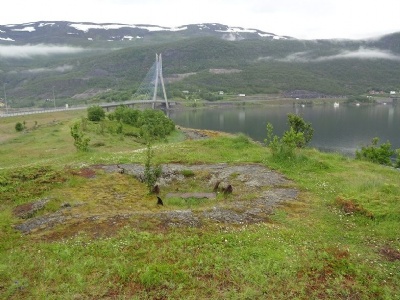

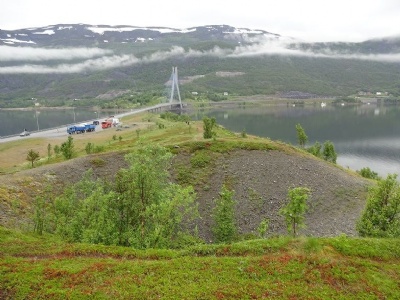



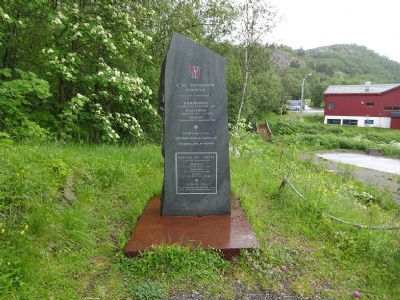
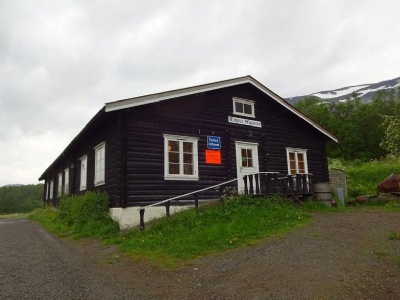
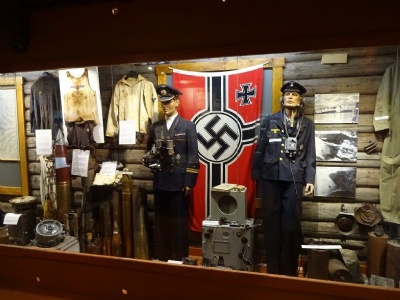


There is a Tirpitz museum in Kafjord worth a visit, but it still did not meet the expectations I had. Had expected more Tirpitz so to speak and less other things. But the film in which the director interviewed crew members from both Tirpitz and the mini submarines is very interesting. At the cemetery there is a memorial to the British who died in the mini-submarine attack in September 1943. Most interesting is the anchorage places by the water. Tirpitz was first at the Barbudal and that was where she lay when she was attacked by the mini submarines. She was then moved a few 100 meters to the peninsula Straumsneset, located below the mountain Sakkobadne. Today a bridge (E6) connects Bardudalen and Straumsneset.
At Straumsneset there is a lot to see, including a crater after a Tallboy and a lot of used smoke grenade shells that are scattered in the terrain. There are also other objects that I do not really know what they are, but a qualified guess is that it was equipment used in connection with the repair of Tirpitz in 1943 and 1944. It was a special feeling to walk on Straumsneset where Tirpitz was anchored. Kafjord and Tirpitz have a prominent place in the Second World War, and for me, Kafjord is more Tirpitz than Haköya.